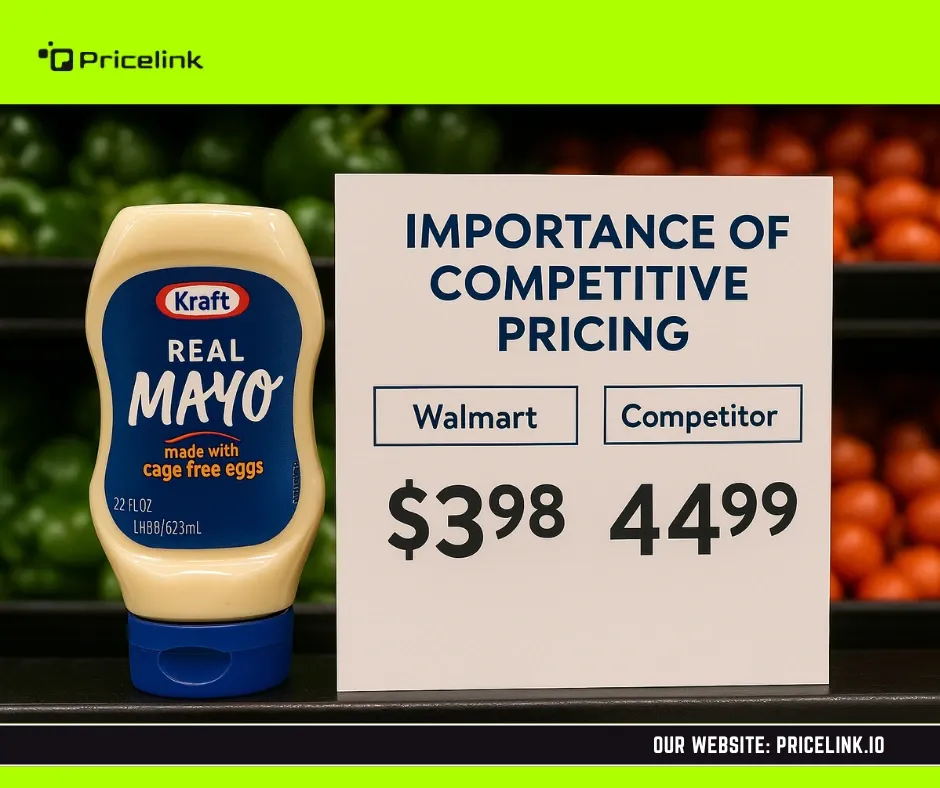Setting the right price can be the difference between success and silence on Walmart’s bustling marketplace. In a world where even a $0.01 price change can shift sales trends, sellers need smarter ways to stay competitive. That’s where rule-based tools come in. But can tools improve price adjustment in Walmart enough to be worth the investment?
This article explores how sellers can shift from reactive to proactive using automated pricing rules. With Walmart’s pricing algorithm constantly at work, tools that bring structure, speed, and logic into the mix can give even small sellers a fighting chance. According to the emerging pricing trends of 2025, adapting faster through automation isn’t just a competitive edge—it’s now a survival skill.
Most importantly, tools improve price adjustment in Walmart by bringing consistency to otherwise chaotic pricing routines.
What Is a Price Adjustment?
Understanding Pricing Changes in Walmart
Price adjustment refers to changing product prices based on supply, demand, competition, or other market conditions. On Walmart Marketplace, sellers often adjust prices to remain appealing, competitive, and profitable. Tools improve price adjustment in Walmart by helping sellers respond automatically to these fluctuations in real time. These tools improve price adjustment in Walmart across hundreds of SKUs simultaneously without delays or inconsistencies.
Why Walmart Sellers Care About Pricing
Importance of Competitive Pricing

Walmart is a price-sensitive platform. Buyers compare and choose based on value. If your price is even slightly off, you risk losing the Buy Box—Walmart’s top placement for listings. For sellers, this means fewer clicks, fewer conversions, and fewer sales. Tools improve price adjustment in Walmart by giving sellers a structured way to stay within competitive thresholds and automatically adjust to competition.
The Cost of Manual Pricing Errors
Manual pricing takes time and is full of human errors. You could forget to lower your price when needed or miss an opportunity to raise it when competition is low. These mistakes eat away at margins and momentum. With automation, tools improve price adjustment in Walmart by reducing errors and saving valuable time. These tools improve price adjustment in Walmart, especially during high-volume periods when fast reaction is essential.
Walmart’s Algorithm and Price Competitiveness
Walmart uses its algorithm to scan prices across sellers and competitors. The lower your price (within reason), the more love the algorithm shows your product. Sellers who fail to keep pace simply vanish in visibility. Tools improve price adjustment in Walmart by ensuring that changes happen faster than competitors can react manually. These tools improve price adjustment in Walmart by making sure you always stay within Walmart’s favored price band.
Addressing Price Parity and Buy Box Challenges
Walmart demands price parity. If your product is cheaper on Amazon, Walmart may delist it. That adds more pressure on sellers to monitor pricing constantly. Rule-based tools improve price adjustment in Walmart by helping sellers maintain compliance automatically, ensuring consistent performance. These tools improve price adjustment in Walmart even when you’re listing across multiple platforms.
For more insights, read our full breakdown on How to Scale Your E-Commerce Business.
What Are Rule-Based Tools?
Definition and Core Function
Rule-based tools allow sellers to set custom pricing instructions. For example: “If my competitor drops price by 5%, lower mine by 4%.” The tool watches and reacts for you. These tools improve price adjustment in Walmart by handling repetitive tasks that otherwise require constant attention.
Static Rules vs Dynamic Pricing Tools
Static rules follow fixed logic—no matter what happens. Dynamic pricing tools can adjust based on demand, stock levels, or time of day. Rule-based tools fall somewhere in between—simple but smart. Overall, tools improve price adjustment in Walmart by blending logic with flexibility and preventing pricing anomalies. Related: Struggling to Track Walmart Stock Status Fast? Read here
Rule-Based vs AI-Powered Tools
AI tools learn and evolve. Rule-based tools follow exact commands. They may not predict trends, but they give sellers control and predictability. And they don’t require tech knowledge to set up. In this way, tools improve price adjustment in Walmart by making advanced strategy accessible and scalable.
Real-World Examples in Walmart Marketplace
Sellers often set rules like “stay $0.10 below competitor price unless profit margin drops under 15%.” Tools improve price adjustment in Walmart by enforcing such rules every hour, every day, ensuring no missed opportunities or pricing slip-ups. These tools improve price adjustment in Walmart even during holidays or promotional cycles.
Benefits for Beginner Sellers
For those just starting, rule-based tools are affordable, easy to set up, and low-risk. They give new sellers a grip on competitive pricing without being overwhelmed by data. These tools improve price adjustment in Walmart by creating structure even for beginners and avoiding guesswork-driven pricing.
How These Tools Improve Price Adjustment in Walmart
Timely Reaction to Market Shifts
The eCommerce market never sleeps. When a competitor drops their price at midnight, your tool reacts by 12:01 AM. Tools improve price adjustment in Walmart by keeping your listings fresh 24/7 without manual effort.
Avoiding Underpricing Traps
Some sellers panic and drop prices too low. Rule-based tools stop that. You can set a minimum margin rule to avoid selling at a loss. Smart automation protects both your sales and your profits. That’s why tools improve price adjustment in Walmart by adding guardrails to emotional decision-making.
Boosting Visibility and Buy Box Wins
The Walmart Buy Box is where sales explode. To win it, price matters most. Tools improve price adjustment in Walmart by helping sellers stay in that competitive sweet spot to get more visibility. This edge is critical for long-term growth. These tools improve price adjustment in Walmart by keeping your prices aligned with Walmart’s algorithmic preferences.
Reducing Guesswork in Repricing
Guesswork leads to poor pricing. With set rules, the tool makes decisions based on logic. This replaces doubt with confidence and saves hours of manual work. Clearly, tools improve price adjustment in Walmart by simplifying strategy and reducing pricing errors.
Ensuring Compliance With Walmart's Pricing Rules
Walmart penalizes unfair price practices. A tool with rule-based logic ensures your pricing stays within Walmart’s fair pricing policy and avoids price suspension or delisting. These tools improve price adjustment in Walmart by making compliance automatic and effortless.
Why Sellers Struggle Without Automation
Manual Pricing’s Limitations
Many sellers still change prices manually. They either forget, react too late, or change prices based on feeling rather than facts. This creates gaps in competitiveness. Without tools, sellers often lose the Buy Box or miss windows of profit. Time becomes the enemy. The market moves too fast to rely on human hands alone.
That’s why tools improve price adjustment in Walmart not just by speed, but by smart consistency. They help even the playing field between small sellers and big brands. And for those struggling to stay visible, these tools improve price adjustment in Walmart by maintaining competitive presence even during off-hours. These tools improve price adjustment in Walmart at scale—across hundreds of listings simultaneously.
Common Rule-Based Strategies That Work on Walmart
Practical Rules That Deliver Results
Some sellers create a rule to always stay $0.05 cheaper than their top competitor. Others build tiered rules based on inventory level or seasonal trends. One common rule: raise prices when stock is low to maintain profit during high demand.
These strategies give structure to chaos. Tools improve price adjustment in Walmart by enforcing rules like:
Never price below $X Match lowest seller, but only during weekends Increase price when 5 or fewer units are left Undercut competition by 2%, but protect 20% margin Match Amazon’s pricing only if shipping cost is equal
Can Rule-Based Tools Compete With AI Tools?
Comparing Logic-Driven Tools to AI
AI tools are powerful—but not always better. They often need tons of data to work well and can be costly. Rule-based tools, on the other hand, are transparent and easy to control. You know exactly what they’re doing.
While AI adapts, rule-based tools deliver consistency. And for Walmart sellers, especially those focused on specific goals (like Buy Box wins), consistency is king. Tools improve price adjustment in Walmart when the rules are clear, intentional, and well-targeted.
The debate is also covered in our breakdown of How Walmart Optimize Listings — PriceLink vs Native Tools, offering insight into how logic-driven tools give you more predictable wins. That’s why these tools improve price adjustment in Walmart even when AI isn't an option. These tools improve price adjustment in Walmart through reliable, repeatable actions.
Pros and Cons of Rule-Based Tools for Walmart Sellers
Evaluating Strengths and Weaknesses
Pros
- Easy to use
- Transparent logic
- Budget-friendly
- Great for focused goals
- No learning curve
Cons
- Limited adaptability
- Can’t “learn” new trends
- Needs manual tweaking over time
- May lose edge in complex pricing wars
Still, for most Walmart sellers, the pros outweigh the cons—especially when just starting or maintaining a stable pricing model. These tools improve price adjustment in Walmart when your business values control over prediction.
Top Features to Look for in a Rule-Based Pricing Tool
When choosing a tool, look for:
- Real-time repricing
- Competitive price tracking
- Rule stacking (multi-level commands)
- Minimum and maximum pricing controls
- Walmart API integration
Tools improve price adjustment in Walmart only when they’re built to work with Walmart’s system. According to our Walmart Listing Optimization Guide, pricing isn’t just a backend task—it directly influences your visibility and conversion rate. Therefore, tools improve price adjustment in Walmart by playing a critical role in front-end performance. These tools improve price adjustment in Walmart by integrating seamlessly with listing optimization strategies.
What Happens When Pricing Becomes Rule-Based
Long-Term Benefits of Structured Pricing
Once pricing becomes rule-based, the entire pricing lifecycle becomes streamlined. Repricing no longer depends on manual oversight or guesswork. Instead, decisions are made based on clear logic, triggered by real market changes. These tools improve price adjustment in Walmart by ensuring consistency and eliminating reaction delays.
For those still unsure how to use pricing data efficiently, our guide on What Are Actionable Insights? breaks down how data can lead to clear, measurable outcomes. Explore how to scale your eCommerce business by combining pricing tools with inventory and multichannel automation. Learn how to align these strategies by following our complete roadmap on How to Scale Your E-Commerce Business.
Conclusion
The Walmart marketplace is fierce, and pricing is the sharpest weapon. Manual adjustments just can’t keep up. That’s where rule-based tools come in—not flashy, but powerful. They help sellers set smart rules, win more Buy Boxes, and stay compliant with Walmart’s tricky policies.
In short, tools improve price adjustment in Walmart by removing the guesswork and putting sellers in control. Whether you’re scaling up or just starting out, rule-based pricing might just be the silent partner your business needs to compete—and win. These tools improve price adjustment in Walmart not only by saving time but by transforming how sellers approach pricing altogether.
